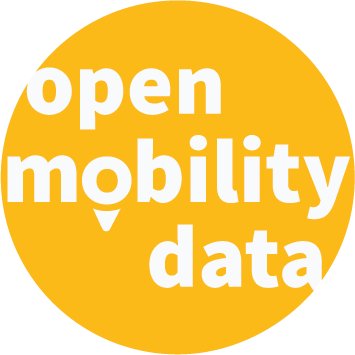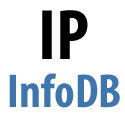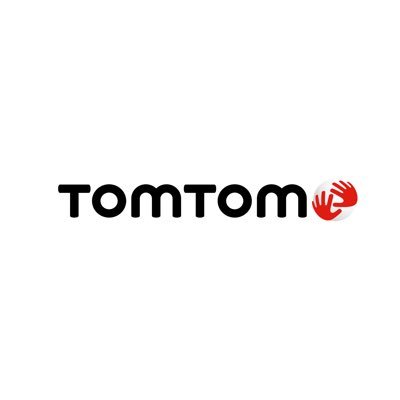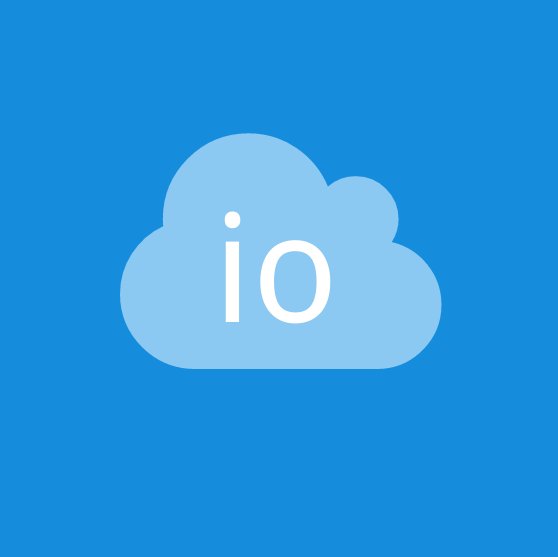Mock sample for your project: OpenAQ API
Integrate with "OpenAQ API" from openaq.local in no time with Mockoon's ready to use mock sample
OpenAQ
openaq.local
Version: 2.0.0
Integrate third-party APIs faster by using "OpenAQ API" ready-to-use mock sample. Mocking this API will help you accelerate your development lifecycles and improves your integration tests' quality and reliability by accounting for random failures, slow response time, etc.
It also helps reduce your dependency on third-party APIs: no more accounts to create, API keys to provision, accesses to configure, unplanned downtime, etc.
Description
API for OpenAQ LCS
Other APIs in the same category
Space Radiation API
amentum.space
Space has a hostile radiation environment that increases the risk of cancers in humans and malfunctions in spacecraft electronics. The types of space radiation of primary concern are:
Galactic Cosmic Rays from outside our solar system generated by
supernovae and other phenomena;
Solar Energetic Particles produced by the Sun during intense and
sporadic bursts of activity; and
Trapped Radiation: energetic particles confined by Earth's magnetic
field, usually comprising an inner belt of mostly high energy protons
and an outer belt dominated by lower energy electrons and plasma.
Understanding the space radiation environment for a particular mission profile is becoming increasingly important. Commercial off-the-shelf electronic components that aren't resilient to space radiation are now prevalent. Longer duration missions to cislunar space, Mars, and beyond are placing astronauts at greater risk of radiation exposure.
API requests must contain a key "API-Key" in the header (see code samples). Obtain a key from here.
Help us improve the quality of our web APIs by completing our 2 minute survey here.
Amentum Pty Ltd is not responsible nor liable for any loss or damage of any sort incurred as a result of using the API.
Copyright Amentum Pty Ltd 2021.
Galactic Cosmic Rays from outside our solar system generated by
supernovae and other phenomena;
Solar Energetic Particles produced by the Sun during intense and
sporadic bursts of activity; and
Trapped Radiation: energetic particles confined by Earth's magnetic
field, usually comprising an inner belt of mostly high energy protons
and an outer belt dominated by lower energy electrons and plasma.
Understanding the space radiation environment for a particular mission profile is becoming increasingly important. Commercial off-the-shelf electronic components that aren't resilient to space radiation are now prevalent. Longer duration missions to cislunar space, Mars, and beyond are placing astronauts at greater risk of radiation exposure.
API requests must contain a key "API-Key" in the header (see code samples). Obtain a key from here.
Help us improve the quality of our web APIs by completing our 2 minute survey here.
Amentum Pty Ltd is not responsible nor liable for any loss or damage of any sort incurred as a result of using the API.
Copyright Amentum Pty Ltd 2021.

api.ecota.co v2
staging-ecotaco.com
The API ecotaco allows you to connect, create an account,
manage your credit cards and order rides.
Authentication
Ecotaco API use a system of application key and authentification token.
Application key :
The application key is generated by Ecota.co and unique to an application.
Before accessing EcoTa.co APIs, you need to register your application. Please supply the following information to [email protected]:
Application name
Company (if appropriate)
Contact name, phone and address
Contact email
Is this a web application, a desktop application, or an application running on a device?
Short description of your application
It must be passed on request : "accounts -> login", "accounts -> facebook login" and "accounts -> register" .
Authentification token :
The authentification token is retrieved at login or register of an user.
It must be passed in request for authenticate action in Authorization HTTP header.
Example :
Authorization: Token token=e55887022c1aca4c86abcc49e85ceb8a0c855d2af4d9fac75c08040a583dcde4
Language
On some of our resources, we filter the content displayed based on the Accept-Language header.
If the language is not defined or if we don't use the language defined in this header, we automatically use French as the default language.
EcoTa.co currently support two languages: English, French. ("en" and "fr")
Encoding
All requests and answers on EcoTa.co are in UTF-8.
manage your credit cards and order rides.
Authentication
Ecotaco API use a system of application key and authentification token.
Application key :
The application key is generated by Ecota.co and unique to an application.
Before accessing EcoTa.co APIs, you need to register your application. Please supply the following information to [email protected]:
Application name
Company (if appropriate)
Contact name, phone and address
Contact email
Is this a web application, a desktop application, or an application running on a device?
Short description of your application
It must be passed on request : "accounts -> login", "accounts -> facebook login" and "accounts -> register" .
Authentification token :
The authentification token is retrieved at login or register of an user.
It must be passed in request for authenticate action in Authorization HTTP header.
Example :
Authorization: Token token=e55887022c1aca4c86abcc49e85ceb8a0c855d2af4d9fac75c08040a583dcde4
Language
On some of our resources, we filter the content displayed based on the Accept-Language header.
If the language is not defined or if we don't use the language defined in this header, we automatically use French as the default language.
EcoTa.co currently support two languages: English, French. ("en" and "fr")
Encoding
All requests and answers on EcoTa.co are in UTF-8.

IP2Proxy Proxy Detection
ip2proxy.com
IP2Proxy allows instant detection of anonymous proxy, VPN, TOR exit nodes, search engine robots (SES), data center ranges (PX2-PX10), residential proxies (PX10) and VPN provider name (PX11) by IP address. It also returns the threat type of the proxy (PX9 or higher). Visit https://www.ip2location.com/web-service/ip2proxy for further information.
Gravity API
amentum.space
The gravitational field of the earth is non-uniform. The geoid is the shape the
ocean surface would take if only gravity and the rotation of the Earth
were considered. The geoid is the surface that defines zero elevation.
The geoid height is the difference between an ideal reference ellipsoid and the geoid.
The gravity anomaly is the difference between the acceleration due to gravity on the Earth's surface and the value calculated assuming the reference ellipsoid.
The official Earth Gravitational Model EGM2008 was developed and released to the public by the National Geospatial-Intelligence Agency (NGA).
Our EGM2008 API provides on-demand access to the EGM2008 model, as implemented by the open-source GeographicLib Gravity library.
API requests must contain a key "API-Key" in the header (see code samples). Obtain a key from here.
Amentum Pty Ltd is not responsible nor liable for any loss or damage of any sort incurred as a result of using the API.
Copyright Amentum Pty Ltd 2021.
ocean surface would take if only gravity and the rotation of the Earth
were considered. The geoid is the surface that defines zero elevation.
The geoid height is the difference between an ideal reference ellipsoid and the geoid.
The gravity anomaly is the difference between the acceleration due to gravity on the Earth's surface and the value calculated assuming the reference ellipsoid.
The official Earth Gravitational Model EGM2008 was developed and released to the public by the National Geospatial-Intelligence Agency (NGA).
Our EGM2008 API provides on-demand access to the EGM2008 model, as implemented by the open-source GeographicLib Gravity library.
API requests must contain a key "API-Key" in the header (see code samples). Obtain a key from here.
Amentum Pty Ltd is not responsible nor liable for any loss or damage of any sort incurred as a result of using the API.
Copyright Amentum Pty Ltd 2021.

TransitFeeds API
API to view feed information and download feeds from TransitFeeds.com
Aviation Radiation API
amentum.space
Our atmosphere protects us from a hostile space radiation environment comprising high energy particles of solar and intergalactic origin. Solar radiation is significant during unpredictable and short lived solar flares and coronal mass ejections (CMEs); however, galactic cosmic radiation (GCR) is omnipresent. The GCR intensity varies with latitude, longitude, and time due to effects of solar activity on the interplanetary magnetic field, as well as the Earth's magnetic field. Space radiation collides with gases in the atmosphere, leading to a complex shower of high energy radiation, the intensity and composition of which varies spatially and temporally. Excessive exposure to radiation can damage DNA and lead to long-term health effects such as an increased risk of cancer. Resulting radiation levels at commercial aircraft altitudes are greater than at sea level due. Aircrew are classified as radiation workers in some countries; however, planning to limit their exposure, and monitoring, is generally lacking. Both real-time measurements and predictive models of radiation in the atmosphere are important to mitigate the radiation risk crew.
We host a RESTful API to models of cosmic ray induced ionising radiation in the atmosphere. The PARMA or CARI7 endpoints can be used to calculate Effective Dose or Ambient Dose Equivalent at a point.
The Route Dose API calculates the same quantities along a great circle route between two airports using CARI7.
API requests must contain a key "API-Key" in the header (see code samples). Obtain a key from here.
Help us improve the quality of our web APIs by completing our 2 minute survey here.
Amentum Pty Ltd is not responsible nor liable for any loss or damage of any sort incurred as a result of using the API.
Copyright Amentum Pty Ltd 2021.
We host a RESTful API to models of cosmic ray induced ionising radiation in the atmosphere. The PARMA or CARI7 endpoints can be used to calculate Effective Dose or Ambient Dose Equivalent at a point.
The Route Dose API calculates the same quantities along a great circle route between two airports using CARI7.
API requests must contain a key "API-Key" in the header (see code samples). Obtain a key from here.
Help us improve the quality of our web APIs by completing our 2 minute survey here.
Amentum Pty Ltd is not responsible nor liable for any loss or damage of any sort incurred as a result of using the API.
Copyright Amentum Pty Ltd 2021.

Ipinfodb.com
ipinfodb.com

Routing
Routing consists of the following service:
Calculate Route
Calculates a route between an origin and a destination, passing through waypoints (if specified). Additional routing parameters like traffic, avoidance conditions, departure/arrival time etc. can be taken into account.
Calculate Reachable Range
Calculates a set of locations that can be reached from the origin point, subject to the available fuel or energy budget that is specified in the request.
Calculate Route
Calculates a route between an origin and a destination, passing through waypoints (if specified). Additional routing parameters like traffic, avoidance conditions, departure/arrival time etc. can be taken into account.
Calculate Reachable Range
Calculates a set of locations that can be reached from the origin point, subject to the available fuel or energy budget that is specified in the request.
Georg API
nrm.se

Weatherbit.io - Swagger UI Weather API documentation
weatherbit.io
This is the documentation for the Weatherbit Weather API. The base URL for the API is http://api.weatherbit.io/v2.0/ or https://api.weatherbit.io/v2.0/. Below is the Swagger UI documentation for the API. All API requests require the key parameter. An Example for a 5 day forecast for London, UK would be http://api.weatherbit.io/v2.0/forecast/3hourly?city=London&country=UK. See our Weather API description page for additional documentation.

Gisgraphy webservices
gisgraphy.com
Since 2006, Gisgraphy is a free, open source framework that offers the possibility to do geolocalisation and geocoding via Java APIs or REST webservices. Because geocoding is nothing without data, it provides an easy to use importer that will automatically download and import the necessary (free) data to your local database (OpenStreetMap, Geonames and Quattroshapes: more than 100 million entries). You can also add your own data with the Web interface or the importer connectors provided. Gisgraphy is production ready, and has been designed to be scalable(load balanced), performant and used in other languages than just java : results can be output in XML, JSON, PHP, Python, Ruby, YAML, GeoRSS, and Atom. One of the most popular GPS tracking System (OpenGTS) also includes a Gisgraphy client...Gisgraphy is a framework. As a result it's flexible and powerful enough to be used in a lot of different use cases. read more
if you use the premium servers, you can use the api key to test the webservices
if you use the premium servers, you can use the api key to test the webservices

VA Facilities
va.gov
Background
This RESTful API provides information about physical VA facilities. Information available includes
geographic location, address, phone, hours of operation, and available services.
VA operates several different types of facilities, the types represented in this API include:
Health Facilities (vha)
Benefits Facilities (vba)
Cemeteries (nca)
Vet Centers (vc)
To read an FAQ on how wait times are calculated, click the "For more information" link on this page.
Getting Started
Base URLs
The base URLs for the VA Facilities API in the various environments are:
Sandbox: https://sandbox-api.va.gov/services/va_facilities/v0
Production: https://api.va.gov/services/va_facilities/v0
Authorization
API requests are authorized through a symmetric API token, provided in an HTTP header with name apikey.
Response Formats
Clients may request several response formats by setting the Accept header.
application/json - The default JSON response format complies with JSON API. This media type is not available for bulk requests using the /facilities/all endpoint. It will return 406 Not Acceptable.
application/geo+json - GeoJSON-compliant format, representing each facility as a feature with a point geometry.
application/vnd.geo+json - Deprecated. Prefer application/geo+json.
text/csv - Available for the bulk download operation only. Some structured fields are omitted from the CSV response.
Response Elements
Some data elements within the response are only present for facilities of a given type:
The patient satisfaction scores contained in the satisfaction element are only applicable
to VA health facilities.
The patient wait time values contained in the wait_times element are only applicable to
VA health facilities.
The list of available services in the services element is only applicable to VA health and
benefits facilities.
The operational hours special instructions contained in the operationalhoursspecial_instructions element is only applicable to VA health and Vet Center facilities.
Facility ID Formats and Constraints
A facility ID has the format prefix_stationNumber. The prefix is one of nca, vc, vba, or vha. Cemeteries may be national (VA) or non-national; non-national cemeteries have the station number prefixed with an s. There are no other constraints on the format. Examples:
Health: vha_402GA
Benefits: vba_539GB
National cemetery: nca_063
Non-national cemetery: nca_s1082
Vet center: vc_0872MVC
Mobile Facilities
The mobile health facilities move regularly within a region. If a facility comes back from this API with "mobile": "true", the latitude/longitude and address could be inaccurate. To get the exact current location, please call the number listed.
Deprecations
activestatus field is deprecated and replaced with operatingstatus.
application/vnd.geo+json media type is deprecated and replaced by application/geo+json
Reference
Raw VA Facilities Open API Spec
GeoJSON Format
JSON API Format
This RESTful API provides information about physical VA facilities. Information available includes
geographic location, address, phone, hours of operation, and available services.
VA operates several different types of facilities, the types represented in this API include:
Health Facilities (vha)
Benefits Facilities (vba)
Cemeteries (nca)
Vet Centers (vc)
To read an FAQ on how wait times are calculated, click the "For more information" link on this page.
Getting Started
Base URLs
The base URLs for the VA Facilities API in the various environments are:
Sandbox: https://sandbox-api.va.gov/services/va_facilities/v0
Production: https://api.va.gov/services/va_facilities/v0
Authorization
API requests are authorized through a symmetric API token, provided in an HTTP header with name apikey.
Response Formats
Clients may request several response formats by setting the Accept header.
application/json - The default JSON response format complies with JSON API. This media type is not available for bulk requests using the /facilities/all endpoint. It will return 406 Not Acceptable.
application/geo+json - GeoJSON-compliant format, representing each facility as a feature with a point geometry.
application/vnd.geo+json - Deprecated. Prefer application/geo+json.
text/csv - Available for the bulk download operation only. Some structured fields are omitted from the CSV response.
Response Elements
Some data elements within the response are only present for facilities of a given type:
The patient satisfaction scores contained in the satisfaction element are only applicable
to VA health facilities.
The patient wait time values contained in the wait_times element are only applicable to
VA health facilities.
The list of available services in the services element is only applicable to VA health and
benefits facilities.
The operational hours special instructions contained in the operationalhoursspecial_instructions element is only applicable to VA health and Vet Center facilities.
Facility ID Formats and Constraints
A facility ID has the format prefix_stationNumber. The prefix is one of nca, vc, vba, or vha. Cemeteries may be national (VA) or non-national; non-national cemeteries have the station number prefixed with an s. There are no other constraints on the format. Examples:
Health: vha_402GA
Benefits: vba_539GB
National cemetery: nca_063
Non-national cemetery: nca_s1082
Vet center: vc_0872MVC
Mobile Facilities
The mobile health facilities move regularly within a region. If a facility comes back from this API with "mobile": "true", the latitude/longitude and address could be inaccurate. To get the exact current location, please call the number listed.
Deprecations
activestatus field is deprecated and replaced with operatingstatus.
application/vnd.geo+json media type is deprecated and replaced by application/geo+json
Reference
Raw VA Facilities Open API Spec
GeoJSON Format
JSON API Format